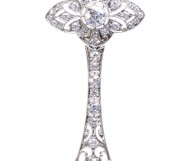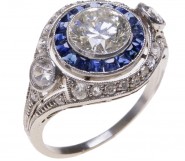Lot #44 - Eric Thake
-
Auction House:Bonhams Australia
-
Sale Name:Important Australian Art
-
Sale Date:22 Apr 2021 ~ 6.30pm (AEST)
-
Lot #:44
-
Lot Description:Eric Thake
(1904-1982)
Complete Set of 40 Christmas Cards, 1941-1980
linocut and etchings on paper (Unframed)
dimensions variable, approximately 15.0 x 20.0cm (each)
titled, signed and dated below image
Comprising: The Itchy Owl, 194; Then Wrought A Tomb And Slept, 1942; The Habitat Of The Dodo, 1943; Strang; Spectacle, 1944; What A Cow!, 1945; Mirage People, Alice Springs, 1946; "Get Off Me Back", 1947; "Desiderata" Or "That Hollow Log at Alice Springs", 1948; "The Adoration Of The Magi", 1949; Self-Portrait Among The Anthills, 1950; The Plume Hunter, 1951; The Rock and the Flies, 1952; "The Inhabitants Of This Country", 1953; "Sacred And Profane Love", 1954; "The Wrong Horse", 1955; "Ecstasy", 1956; Comparisons, 1957; "She's Late Today!", 1958; Introductions At R.C.H., "Mr Thake - Dr. So and So", 1959; Horsham Sale Yards: "She's A Beautiful Pig Boys, All Meat And No Pertaters!", 1960; Christmas Greetings From Thake's Flat, 1961; In The Melbourne Gallery: "Epstein, Einstein? I can never remember!, 1962; "In The Nude! Oh, Mr. Thake", 1963; Sunshine and Rain, Lygon Street, 1964; Figure in a Rocky Landscape, 1965; "She's Warm Alright", 1966; Desert Island, 1967; Where's All Your 30,000 Jim? Well you remember those chops we had last night!, 1968; Nuns Of The Geelong Road... Oil Sheiks to Bahrein?, 1969; When In Kalgoorlie, Dial-a-prayer, 1970; Heels And Heeler, Longreach, 1971; An Opera House in Every Home, 1972; Roadside Bunyip, 1973; Hippobottomi, 1974; A Message from Our Sponsor, 1975; Alberto's Elephants and Newcastle's "pokies" wave goodbye to 1976, 1976; TV Camel of Lake Rudolf, 1977; The eagle And The aeroplane 1978; "Ladies... ABOUT TURN", 1979; Airlines Resume, 1980 -
Provenance:Mr David Bradshaw OAM, Victoria; Private collection, Melbourne, acquired from the above c.1984
-
Notes:Wartime shortages prompted the Melbourne artist and illustrator Eric Thake to print his own Christmas card in 1941. It was deliberately amusing because he wanted to cheer up family and friends after a harrowing year when Japanese invasion seemed imminent. The responses lead to a repeat effort the next festive season, and the next. By 1948 Thake's annual Christmas cards had a following. The number of recipients ballooned as artists he knew slightly sent him greetings hoping for one of his cards in return. Eventually he was commissioned to produce several cards. Printed in linocut using black ink on white card, Thake's cards were inventive exercises in graphic concision. The stylish images were executed with a clean economy of form where edges were often denoted by slicing hair-thin white lines across dark masses. But technical mastery explains only part of the appeal of cards that avoided Christmas subjects. What artists and collectors savoured about those cards was a dry wit, the intention always being to stir hearty laughter. In this Thake's visual humour was reminiscent of the New Yorker cartoonists James Thurber and Saul Steinberg, although his cards always had an Australian twang. Several themes recurred. There was rural imagery distilled from the artist's intermittent country trips, as well as holidays outback. He had a taste for Australian natural history, representing animals, birds and lizards he had seen that sparked his imagination. There were also glimpses of country hotels and bars — the most accomplished being his view of a blue heeler contrasted with the heels of drinkers — masculine subjects that Thake repeatedly explored in his paintings and drawings. 1 Concealed amidst these rural pieces can be self-images, Thake concealing caricatures of his own face into an ant hill, a camel and a rocky outcrop. Then there are the blunt comic images — three hippopotami sunning themselves, nuns in a car seen from behind, dishes in a drying rack resembling Sydney's Opera House (note the blowfly), and the hilarious Roadside bunyip, two glowing roadworks lamps sitting on steel drums picked up by his car's headlights. Several of the most accomplished cards are art-scene gags made at the expense of the National Gallery of Victoria. 'This way to Phar Lap' is an affectionate portrait of Daryl Lindsay, the gallery's director, handling the visitors' question that drove him to distraction. 'Mr Picasso', which shows a cubist tribal sculpture and Picassoid harlequin asking a guard about the modern art, on the gallery steps beneath Fremiet's statue of Joan of Arc, was inspired by inquiries about the absence of modern art by overseas visitors during the Melbourne Olympics. Likewise 'Epstein, Einstein' jokes about a seeming disinterest in modern art and ideas at the NGV. But the most telling, and probably cryptic card, Comparisons, has a gallery visitor looking at an Easter Island statue while a Melanesian native strikes an admiring pose as he views the latest model Volkswagen. A labour of love, Eric Thake kept up making cards for nearly forty years, ceasing only when it became too much for his declining energy. Dr Christopher Heathcote, Important Australian Art from the collection of Reg Grundy AC OBE and Joy Chambers-Grundy, Bonhams, 2013, p. 156
-
Estimate:A$20,000 - 30,000
-
Realised Price:
-
Category:Art
This Sale has been held and this item is no longer available. Details are provided for information purposes only.










